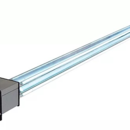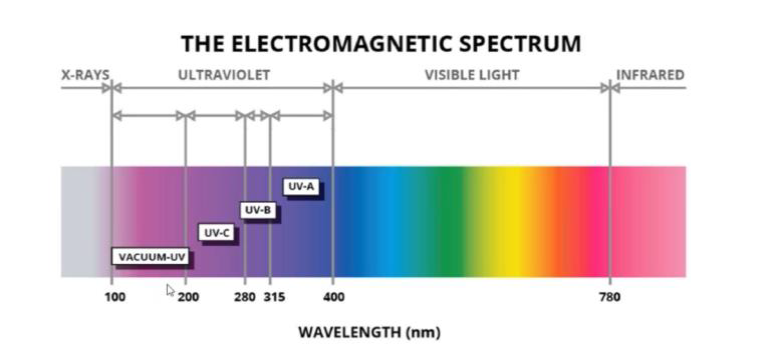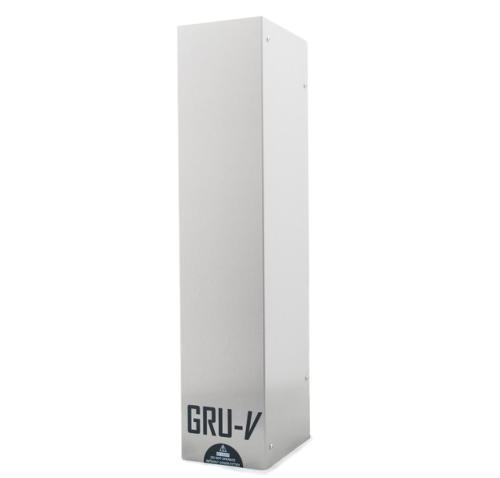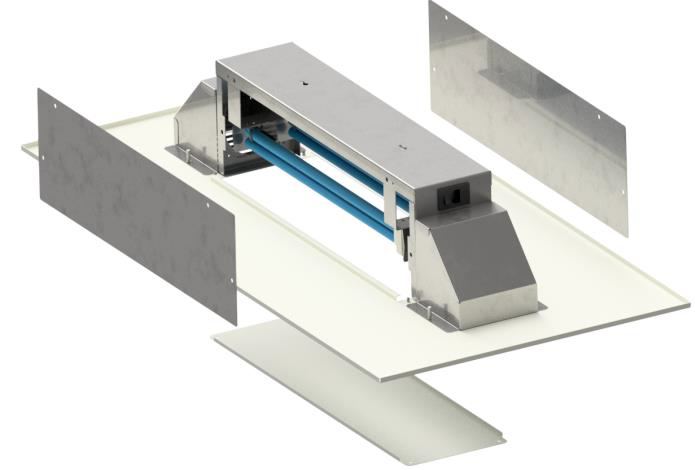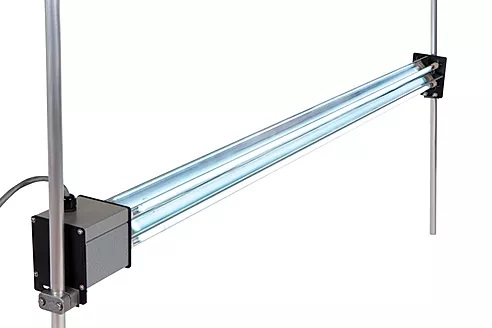UV disinfection of building air to remove harmful bacteria and viruses
Contents |
Introduction
The following article provides a basic explanation of the science and application of using UV (ultraviolet) light to remove airborne bacteria and viruses from buildings.
Increased interest in UV
Since the emergence of COVID-19 there has been a huge increase in interest in UV disinfection for surfaces and air. There has also been a surge in enquiries from architects, building/facility mangers, HVAC/air conditioning experts, building owners and landlords.
The requirement for millions of people to return to work prompts discussion about how existing building infrastructure can be modified to incorporate UV germicidal disinfection. Equally important is how new designs should consider the inclusion of UV.
Various articles and reference papers are available providing facts, but also frequently opinions, about the use of UV light to 'purify' air and many other things. This is frequently complex and overly detailed for those interested in using UV to disinfect air in buildings. Also, much of the information online is rather dated. This brief article is intended to offer a basic factual primer to the subject based on data from September 2020.
What is UV light?
UV light is a range of wavelengths from 10 nm to 400 nm. This bandwidth has higher wavelengths than visible light but lower than X-rays and Gamma rays.
UV is generated naturally by the sun. The UV bandwidth is divided in to three segments:
- UVA, or near UV (315–400 nm)
- UVB, or middle UV (280–315 nm)
- UVC, or far UV (180–280 nm)
To explain the characteristics of each of the above is beyond the scope of this article but they are mentioned because UVC is particularly effective at disrupting bacteria and viruses. UV can be ‘good’ (UVB is responsible for formation of vitamin D) but also ‘bad’ (excessive exposure can cause sunburn and skin cancer).
All UV light is invisible. Ultra is Latin for “beyond” and violet is the last colour of the rainbow.
How does UV light remove microorganisms and viruses?
UVC causes legions in DNA and RNA. Sufficient exposure will cause enough damage to prevent replication, effectively killing the microorganism or virus.
COVID-19 is relatively easy to kill compared to other contaminants. With appropriate exposure to UVC, COVID-19 can be 99.99% killed following a single pass.
Enough UVC exposure is the key to effective but energy optimised systems in buildings. Insufficient UVC = failure to destroy microorganisms and viruses. Excessive UVC generation = unnecessary initial cost and increased energy consumption costs.
How can UVC be applied to 'disinfect' air in buildings?
The core component of any building air UVC disinfection system is lighting tubes emitting the required wavelength and energy. Three primary installation options exist:
Standalone or wall mounted devices.
These devices come in the form of some type of cabinet or enclosure which uses fans to draw air across UVC emitting tubes. Efficacy is a product of air flow rate and tube output power.
Be wary of overly optimistic air flow rates. Devices incorporating other technologies should be critically assessed. HEPA filters clog and will need maintenance, ozone emission is hazardous to humans and activated carbon becomes ineffectual over time.
GRU-V wall mounted air purifier.
Upper air/room systems
Upper air systems are ceiling mounted and deploy louvres to direct the UVC radiation at an angle to minimise exposure to people. Sufficient ceiling height is essential to avoid undesired exposure. Convection and additional mechanical air movement can be used to lift airborne contaminants upwards to the active area.
In duct installations.
UVC can be used in ducted installations in two ways. First, localised UVC can be applied to the system coils to maintain efficiency. But perhaps more importantly a properly modelled UVC Torpedo type installation will provide the correct balance of optimum germicidal effect combined with essential energy efficiency.
In duct mounted Torpedo device.
Conclusion
The key to an energy efficient but effective system is frequent software modelling of the intended ventilation system and UV components. This ensures the correct 'dosage'. Some companies provide suitable in-house modelling services to achieve this.
Steps must also be taken to ensure people are not directly exposed to UV light. The installation is either self contained or installed with safety interlocks to remove power from the UV tubes when maintenance access is required. A suitably designed and installed system can provide effective removal of airborne bacteria and viruses with very little ongoing maintenance or spare part costs.
Related articles on Designing Buildings Wiki
Featured articles and news
One of the most impressive Victorian architects. Book review.
RTPI leader to become new CIOB Chief Executive Officer
Dr Victoria Hills MRTPI, FICE to take over after Caroline Gumble’s departure.
Social and affordable housing, a long term plan for delivery
The “Delivering a Decade of Renewal for Social and Affordable Housing” strategy sets out future path.
A change to adoptive architecture
Effects of global weather warming on architectural detailing, material choice and human interaction.
The proposed publicly owned and backed subsidiary of Homes England, to facilitate new homes.
How big is the problem and what can we do to mitigate the effects?
Overheating guidance and tools for building designers
A number of cool guides to help with the heat.
The UK's Modern Industrial Strategy: A 10 year plan
Previous consultation criticism, current key elements and general support with some persisting reservations.
Building Safety Regulator reforms
New roles, new staff and a new fast track service pave the way for a single construction regulator.
Architectural Technologist CPDs and Communications
CIAT CPD… and how you can do it!
Cooling centres and cool spaces
Managing extreme heat in cities by directing the public to places for heat stress relief and water sources.
Winter gardens: A brief history and warm variations
Extending the season with glass in different forms and terms.
Restoring Great Yarmouth's Winter Gardens
Transforming one of the least sustainable constructions imaginable.
Construction Skills Mission Board launch sector drive
Newly formed government and industry collaboration set strategy for recruiting an additional 100,000 construction workers a year.
New Architects Code comes into effect in September 2025
ARB Architects Code of Conduct and Practice available with ongoing consultation regarding guidance.
Welsh Skills Body (Medr) launches ambitious plan
The new skills body brings together funding and regulation of tertiary education and research for the devolved nation.
Paul Gandy FCIOB announced as next CIOB President
Former Tilbury Douglas CEO takes helm.






